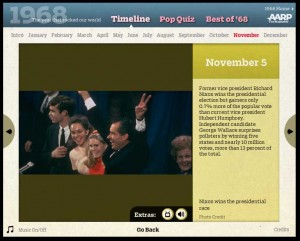 I’m an off-and-on supporter of National Public Radio, I admit it. I’m a fair-weather donor to NPR, depending on how much I’m tuning in. There have been periods when I commute with the car when I listen to NPR a lot, and then there are times when I ride the bus to work and I pass the time with my iPod set to shuffle.
I’m an off-and-on supporter of National Public Radio, I admit it. I’m a fair-weather donor to NPR, depending on how much I’m tuning in. There have been periods when I commute with the car when I listen to NPR a lot, and then there are times when I ride the bus to work and I pass the time with my iPod set to shuffle.
Lately, I’ve been driving to work more, thanks to a parking space in the building that’s too inviting not to take advantage. So, I’ve been listening to “Morning Edition” and “All Things Considered” more again.
During the run-up to the election, I was a complete news junkie, and also tuned in at the office, streaming my local NPR station, KCFR‘s news programming all day via the Web.
So when the most recent pledge drive came around in October, I was easily enticed to give more support than I ever have. Instead of the minimum of $50 that I’d usually donate, I committed $120 on my credit card just so I could get the premium they offered for that level of support: A Radio Bookmark.
The Radio Bookmark allows me to save stories on NPR to hear them again later. It lets me leave the car instead of sitting in the driveway or a parking lot (or, in some cases, on the shoulder of the road), riveted to my seat and listening until the end of a fascinating report.
Continue reading











